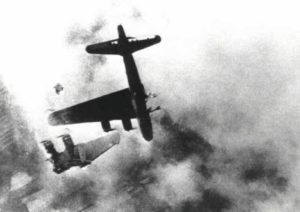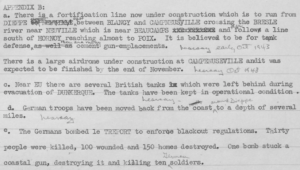
One Man’s War is another Man’s Movie
I do love World War II. No, not the meat-grinding blood, torture, cruelty, death, and heartache that it was. But let some character seem to die or spy in a war book, movie, TV show, play, or program, and I’m there. The entertainments that sprang from the stupendous carnage of World War II are crack to me. I can’t look away.
By now it’s a snap for Netflix, Amazon and modern commerce, building on what I’ve ordered before, to offer vast libraries of World War II videos and books for me. The line between entertainment and meatgrinder blurs. Soon enough, the entertainment displaces the reality. It’s hard to understand how that’s healthy.
It gets worse. My choices attract well-armed armies of marketers who, by now, can reasonably predict what I’m likely to do, buy, vote for, drive, and probably say next. Who needs self-awareness when someone else can mine our data a lot better than we can?
Occasionally, however, reality rudely intrudes on the cold algorithms’ determinations of my tastes and fate.
And when compared with what war is really like, enjoying war movies becomes an uncomfortable dalliance with guilt.
The National Archives, for example, knew to alert me to a set of documents called Escape and Evasion. The documents are debriefing papers, 70-some years-old, hand-written by flesh-and-blood World War II soldiers just back from harrowing flights to safety.
The briefing papers’’ first purpose, of course, was to gather fresh intelligence about the enemy in as close to real time as possible.
I thus happened on the work of 23-year-old 2nd Lt. Allen G. Johnston of Bovina, New York, who was flying at 18,000 feet over occupied Normandy on September 6th, 1943. I learned again that one man’s movie doesn’t approach being like another man’s war.
Below, western Europe was still in enemy hands. Johnston, the plane’s navigator, and the six-man bomber crew had just dropped bombs through a cloud cover on what might have been Stuttgart. Lacking Spielberg-esque CGI or soundtrack, they couldn’t be sure what they’d hit. Husbanding fuel, they turned back to the base.
Out of nowhere, two 20mm shells exploded on the right side of the radio room.
Outside, 15 enemy fighters surrounded them. Six at a time broke from their formation to keep up the attack; two from above, two from below, and two chasing the bomber from behind. Another 20mm shell immediately hit the tail assembly. The plane’s right wing took some 300 bullets. Two of the engines quit. A fire erupted in the bomb bay, and Johnston’s navigation equipment was shot out, useless.
Now perilously close to running out fuel, the pilot feathered one of the remaining engines to save whatever they have left. The plane became an even slower target. The radio operator sent an SOS, although there was no way help could arrive in time.
Out of options, the pilot ordered the crew to bail out.
Allen jumped from the nose, diving headfirst to avoid getting jerked back by the neck of his parachute gear or hit by the plummeting bomber. From about 2000 feet, he saw Germans on motorcycles coming toward his landing spot from several miles away.
He hit the ground, kicked off his flying boots, and unzipped his flying pants. Three German soldiers ran toward him from about 200 yards away. Motorcycle sounds got loud.
He sprinted into the woods, looking for a place to hide and staying about 30 feet from the road until the woods give way to a clearing. Seven locals were talking there. A boy broke from the group and circled behind him. Johnston prepared for the worst.
In English the boy asked if he was British or American. Not knowing what to expect, he confessed he being American. A girl from the group ran to them.

The boy bade him to follow to a tall tree on the woods’ edge, and the boy motioned for him to climb it. It’d be best, he said, to hide in thick branches near the top.
Allen, still not sure whose side they were on, got about 60 feet up before he found a place that could hold him. Below, the strangers vanished.
About 15 minutes later a German carrying a machine gun appeared below. Literally up a tree, the only thing between Johnston and death or capture was the wait for the soldier to spot him.
The German looked up. An accident of war right out of “The Longest Day”: the back lip of the German’s helmet prevents him from looking straight up where Johnston is strapped in. The German prowled around for a few minutes before continuing his search.
As darkness fell back and hoping that the next German hadn’t taken off his helmet, Johnston pawed through his pack to get a Horlicks tablet, designed to keep him awake.
In a tree in France, the woods around him full of Germans, six hours passed.
When the night gets blacker, the boy and girl creep back and wave him down. They duck and trot about four kilometers to the back of a barn. The boy and girl point him up to the hayloft and, again, they disappeared.
Sixty more minutes passed before they returned and hustled him into the farmhouse. They fed him as German radio announced that 10 Americans have just been taken prisoner. (The real number was three.) His rescuers gossiped: German morale was very low. The average soldier was either very young or middle-aged, but grumbling regardless. One German officer could regularly be seen at a cafe in the village, where he would listen to the forbidden BBC. A German soldier of Polish origin, the strangers told him, had tried to steal civilian clothing to go AWOL.
Allen returned to the barn’s hayloft, where he stayed for three days of what must have been an excruciating blend of boredom and fear. But then his French helpers took him away, that time to the home of a “wealthy family.” Unknowingly, he had lucked into the hands of a network of brave, committed resistors familiar to audiences of the purported 1,894 World War II movies produced since 1945. (As of April 2021, at least 15 more were in development in the U.S.)
They shuttled him next to the home of a “married couple with a child.” To keep the kid from saying the wrong thing, they tell him Johnston is German. I’d seen that in a movie, too. The boy’s father worked for the Germans and had access to official German stamps. Three more days went by, when the father brought home some sort of fake identification for Allen.
Then they passed him around. No names were offered. Partisans sneaked him to a cafe and then a hairdresser’s shop, where he holed up for two more weeks. Then a man who “wore knickers and horn-rimmed glasses” appeared.
More than a month after he was shot out of the sky, he found himself hidden in Paris and, perhaps, I finally got to a movie moment. Johnston was stashed in an apartment owned by the “tall, red-headed wife” of a French colonel. He knew her, I swear, as “The Lady in Black.”
This seemed to be getting to more familiar ground. But of course, there was no movie moment, no attraction or flirting or romance or unlikely sex. There was real meat grinding outside.
And the Lady in Black was busy, soon secreting him to the house of yet another Partisan. That man got him to the railway station, and stuck him among nine other downed pilots and escaped prisoners in civilian clothes waiting there. All were bundled onto a train, which roared ahead and stopped a few hours later. It happened to be Barcelona.
From there, on November 18th, 1943, Johnston was finally flown to England.
Movies, of course, rarely include the debriefing bureaucracy, but Johnston spent the next days in paperwork. His described the Germans’ attack tactics, the ordnance that wrecked the plane, and the resulting havoc.
When his deserted plane crashed into the countryside, it didn’t disappear in a brilliant yellow ball of flame. In fact, there were no special effects, no cackling or sadistic villains, no bolted-on love stories that can be relied on to end in bed or in tragedy. There were no minor characters whose cough telegraphed a fatal disease in the next act or who were obnoxious or way too likeable not to be destined to die before the final credits.
There was a happy ending, also free of cinematic touches. Two months later, Johnston married the former Gertrude May Truesdale back in Michigan and was discharged in July 1945, not long after Germany’s surrender. Johnston, whose marriage ultimately produced four children, lived in Livonia, Michigan until October 29, 1990, when he died at the age of 70 of very un-Hollywood “natural causes.”